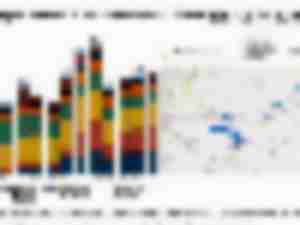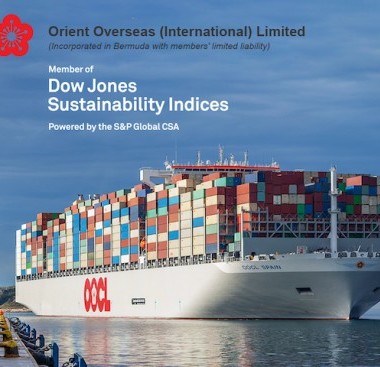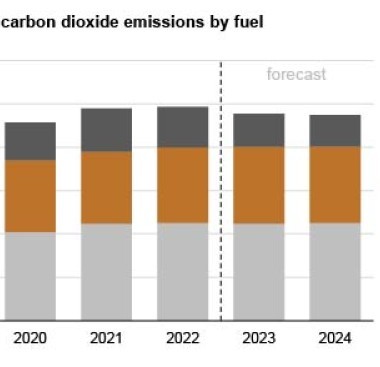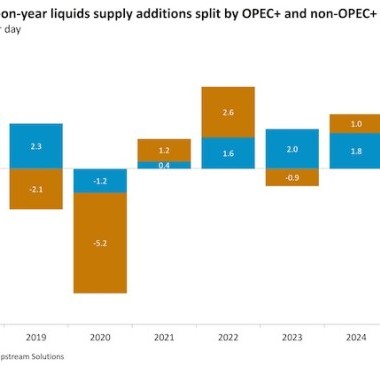Energy
Energy industry news - solar, wind, hydroelectric, natural gas, petroleum.
Oil gains on tight supply against rising demand - Rystad Energy comments
| June 15, 2021 | Energy | Conventional | By The Numbers
Biggest foreign buyers of U.S. fuel about to step on the pedal
| June 14, 2021 | Energy | Conventional

Production of crude oil and natural gas in New Mexico reached new record in March 2021
| June 14, 2021 | Energy | Conventional | By The Numbers
New Mexico had record-high production of crude oil and natural gas in March 2021, averaging 1.16 million barrels per day (b/d) of crude oil and 6.19 billion cubic feet per day (Bcf/d) of natural gas. The March 2021 increases in crude oil and natural gas production were the largest monthly increases on record for New Mexico.
Oil rises further on demand uptick, supply maintenance and vaccination campaign breakthrough -Rystad Energy comments
| June 14, 2021 | Energy | Conventional | By The Numbers
Iran says outline agreed with U.S. to lift energy sanctions
| June 14, 2021 | Energy | Conventional
Rystad Energy’s daily market comment from our Oil Markets Analyst Louise Dickson
| June 11, 2021 | Energy | Conventional | By The Numbers
Tourmaline to buy Canada shale rival, eyes future LNG exports
| June 11, 2021 | Energy | Conventional | International Trade
Global oil demand to hit pre-virus level next year, IEA says
| June 11, 2021 | Energy | Conventional
China is racing to build coal storage capacity as prices soar
| June 11, 2021 | Energy | Conventional
Anglo’s coal retreat may boost South African fossil-fuel output
| June 11, 2021 | Energy | Conventional
Naftogaz CEO pressing U.S. to block Nord Stream 2 completion
| June 10, 2021 | Energy | Conventional

Supply disruptions and rising demand boosted East Coast petroleum product imports in March
| June 10, 2021 | Energy
Imports of petroleum products—gasoline, distillate, and other products—into the East Coast region of the United States increased in March 2021. Rising imports resulted from lower domestic supply, higher demand, and higher domestic petroleum product prices compared with prices in Europe. In March, East Coast petroleum product imports averaged 1.4 million barrels per day (b/d). In addition, East Coast gasoline imports averaged 737,000 b/d, the highest March level since 2009, and East Coast distillate imports averaged 421,000 b/d, the highest March level since 2003.

Treating the US oil industry’s dark water: As earthquakes increase, billions needed to switch course
| June 10, 2021 | Energy
A worrying Rystad Energy analysis of seismic activity in the US’ key oil producing regions reveals that the number of noticeable earthquakes has been increasing year after year since 2017.
Russia sold $5 billion in May as part of oil fund dollar dump
| June 10, 2021 | Energy

Strategic Marine delivers pair of 27m crew transfer vessels to WEM Marine Ltd
| June 09, 2021 | Energy | Alternative
Strategic Marine (S) Pte Ltd, a leading Singapore based shipbuilder and part of Strategic Marine Holdings Pte Ltd, today successfully delivered a pair of 27m CTVs to WEM Marine Ltd, a UK-based offshore support vessel (“OSV") provider with a growing fleet servicing the renewable offshore wind energy sector. This is WEM’s first order with the Strategic Marine Group.

Ørsted joins Norwegian offshore wind consortium with Fred. Olsen Renewables and Hafslund Eco
| June 09, 2021 | Energy | Alternative
Ørsted joins consortium with Fred. Olsen Renewables and Hafslund Eco establishing a long-term partnership to develop offshore wind in Norway and to compete in Norway's upcoming application round for offshore wind areas.

Electric power sector CO2 emissions drop as generation mix shifts from coal to natural gas
| June 09, 2021 | Energy
Over the past 15 years, the U.S. electricity generation mix has shifted away from coal and toward natural gas and renewables, resulting in lower CO2 emissions from electricity generation. In 2019, the U.S. electric power sector produced 1,724 million metric tons (MMmt) of CO2, 32% less than the 2,544 MMmt produced in 2005.

First Solar to double US panel-making capacity with new plant
| June 09, 2021 | Energy | Alternative
First Solar Inc., the largest U.S. solar-panel maker, plans to invest $680 million in a new factory in Ohio to more than double its manufacturing capacity in the country.

Interior Department to explore offshore wind potential in the Gulf of Mexico
| June 09, 2021 | Energy | Alternative
The Department of the Interior has announced its intent to assess potential opportunities to advance clean energy development on the Gulf of Mexico Outer Continental Shelf (OCS). This significant milestone is part of the Biden-Harris administration’s goal to create thousands of jobs through the deployment of 30 gigawatts (GW) of offshore wind by 2030.
Iran plots oil output hike as it says Vienna talks progressing
| June 09, 2021 | Energy
© Copyright 1999–2024 American Journal of Transportation. All Rights Reserved





